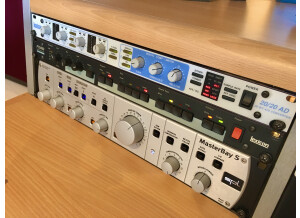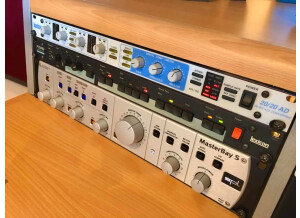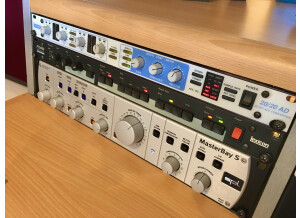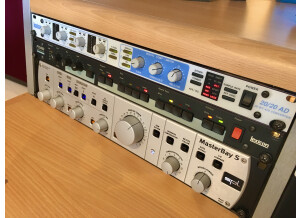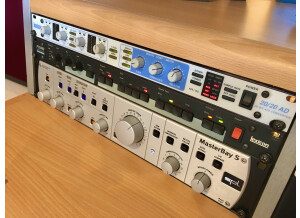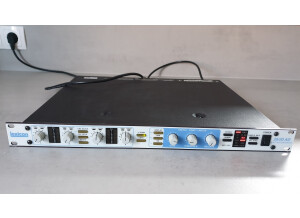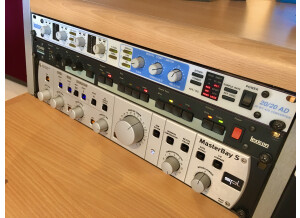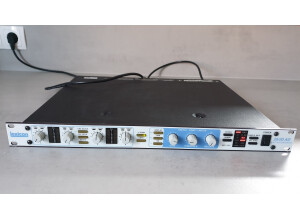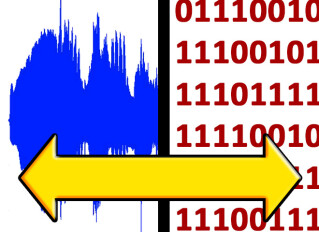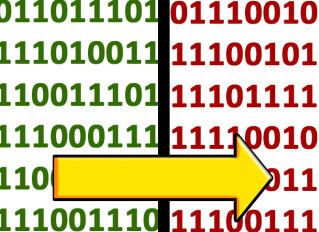20/20AD classified ad
Alerte nouvelle annonceImages
Reviews
5.0/5(3 reviews)
100 %
Write a user review
Pro simply ..
Published on 10/28/11 at 02:42 (This content has been automatically translated from French)all is said ..
OVERALL OPINION
I use the 20/20 ad for 4 months and have tried many other models before buying (RME, Apogee, Behringer, Tascam ..) and it is clearly of a different class the last 2 marks évoquées.Il is more dynamic and friendly sound that behringer and tascam. I'm not a pro, but to me, literally swings differences ears, I find it even more enjoyable than my RME its work in 24 bit yet!
It is expensive but I think the investment is perfectly valid. This choice I would do without any problems if by chance I needed a second.
It is pro, it's expensive, but quality has a price!
OVERALL OPINION
I use the 20/20 ad for 4 months and have tried many other models before buying (RME, Apogee, Behringer, Tascam ..) and it is clearly of a different class the last 2 marks évoquées.Il is more dynamic and friendly sound that behringer and tascam. I'm not a pro, but to me, literally swings differences ears, I find it even more enjoyable than my RME its work in 24 bit yet!
It is expensive but I think the investment is perfectly valid. This choice I would do without any problems if by chance I needed a second.
It is pro, it's expensive, but quality has a price!
20
»
Published on 07/24/09 at 16:00 (This content has been automatically translated from French)
What are the proposed conversions? (Which formats and what the meaning of conversion?)
Analog to digital converter 4 channels
What is the connection?
For the four analog XLR female (input)
For digital optical output on cards (Toslink), RCA (SPDIF), XLR (AES / EBU) as well as entry and exit Word-clock on BNC.
What type of converter is used (if A / D or D / A)?
The converters are working a 20-bit sample rate of 48Khz.
OVERALL OPINION
How long have you use it?
About 12 years!
What is so special that you like most and least?
The higher the quality of sound! On a warm and incredibly accurate! while maintaining its 20 Bits/48Khz are exceeded .. (it is better to work...…
Analog to digital converter 4 channels
What is the connection?
For the four analog XLR female (input)
For digital optical output on cards (Toslink), RCA (SPDIF), XLR (AES / EBU) as well as entry and exit Word-clock on BNC.
What type of converter is used (if A / D or D / A)?
The converters are working a 20-bit sample rate of 48Khz.
OVERALL OPINION
How long have you use it?
About 12 years!
What is so special that you like most and least?
The higher the quality of sound! On a warm and incredibly accurate! while maintaining its 20 Bits/48Khz are exceeded .. (it is better to work...…
Read more
What are the proposed conversions? (Which formats and what the meaning of conversion?)
Analog to digital converter 4 channels
What is the connection?
For the four analog XLR female (input)
For digital optical output on cards (Toslink), RCA (SPDIF), XLR (AES / EBU) as well as entry and exit Word-clock on BNC.
What type of converter is used (if A / D or D / A)?
The converters are working a 20-bit sample rate of 48Khz.
OVERALL OPINION
How long have you use it?
About 12 years!
What is so special that you like most and least?
The higher the quality of sound! On a warm and incredibly accurate! while maintaining its 20 Bits/48Khz are exceeded .. (it is better to work 20bits/48Khz very good when 24bits/96Khz second class ..). The sound is very warm (almost analog) with very good stereo dynamics and openness exemplary precision surgical care only if your source was not good it will do no miracle. Note also a total lack of breath and autrre unwanted noise (APOGEE some of the same generation are a bit more "noisy" ..)
The least .. Absolutely NOTHING!
Have you tried many other models before buying it?
yes of Apogee
How would you rate the quality / price?
At that time the price / quality ratio was very good (about € 4000). Remember that it is very popular in that time and do not really easy to find.
With experience, you do again this choice? ...
A thousand times yes! He is still very often! If not daily!
It is still used in a lot of professional studios across the Atlantic for its particular qualities audios .. If you ever come across is especially beautiful converter try! You will see, you can not do without!
Analog to digital converter 4 channels
What is the connection?
For the four analog XLR female (input)
For digital optical output on cards (Toslink), RCA (SPDIF), XLR (AES / EBU) as well as entry and exit Word-clock on BNC.
What type of converter is used (if A / D or D / A)?
The converters are working a 20-bit sample rate of 48Khz.
OVERALL OPINION
How long have you use it?
About 12 years!
What is so special that you like most and least?
The higher the quality of sound! On a warm and incredibly accurate! while maintaining its 20 Bits/48Khz are exceeded .. (it is better to work 20bits/48Khz very good when 24bits/96Khz second class ..). The sound is very warm (almost analog) with very good stereo dynamics and openness exemplary precision surgical care only if your source was not good it will do no miracle. Note also a total lack of breath and autrre unwanted noise (APOGEE some of the same generation are a bit more "noisy" ..)
The least .. Absolutely NOTHING!
Have you tried many other models before buying it?
yes of Apogee
How would you rate the quality / price?
At that time the price / quality ratio was very good (about € 4000). Remember that it is very popular in that time and do not really easy to find.
With experience, you do again this choice? ...
A thousand times yes! He is still very often! If not daily!
It is still used in a lot of professional studios across the Atlantic for its particular qualities audios .. If you ever come across is especially beautiful converter try! You will see, you can not do without!
See less
50
»
Published on 08/06/10 at 12:21 (This content has been automatically translated from French)
Analog to digital converter with 4 channels operate on a 20 bit sample rate of machine 48Khz.Cet full of features, it can just as easily convert to digital stereo pair of 20-bit, or do the same for two stereo pairs , but this quantification is performed only on 18 bit ..
Four potentiometers provide a dynamic range adjustment of 30 dB. When configured in 20 bit, only the first two are active, because only two analog channels will be digitized. In 18 bit mode, four channels are converted, and each has a bar graph display variable, switchable front:
or eleven LEDs illuminate a 60 dB range, precision-emitting diode from 18dB to 3 dB depending on the level viewed either the dynamic display...…
Four potentiometers provide a dynamic range adjustment of 30 dB. When configured in 20 bit, only the first two are active, because only two analog channels will be digitized. In 18 bit mode, four channels are converted, and each has a bar graph display variable, switchable front:
or eleven LEDs illuminate a 60 dB range, precision-emitting diode from 18dB to 3 dB depending on the level viewed either the dynamic display...…
Read more
Analog to digital converter with 4 channels operate on a 20 bit sample rate of machine 48Khz.Cet full of features, it can just as easily convert to digital stereo pair of 20-bit, or do the same for two stereo pairs , but this quantification is performed only on 18 bit ..
Four potentiometers provide a dynamic range adjustment of 30 dB. When configured in 20 bit, only the first two are active, because only two analog channels will be digitized. In 18 bit mode, four channels are converted, and each has a bar graph display variable, switchable front:
or eleven LEDs illuminate a 60 dB range, precision-emitting diode from 18dB to 3 dB depending on the level viewed either the dynamic display is reduced to the last nine dB before saturation, as indicated by the Where appropriate, the LED OVL (overload). The bar graphs combine the average and peak level at the same time it illuminates the corresponding LED for one second ..
The 20/20 AD also provides a very clever compressor, three buttons and knobs are all sharing the controls of this module fully digital. A first key "DISPLAY" assigns a new role for bar charts, which display the gain reduction of 1 to 11 dB, respectively from top to bottom of the ladder. The button immediately below is used to couple the compressor, the route having the highest peak operating the same gain reduction on all enabled channels. We also find the reverse switch on / off of the processor. The gain knob adjusts the level of small signals below the threshold that has its setting and to determine precisely what point the compression works.
The final volume pot allows adjustment of the release time of 0 milliseconds to infinity. Beyond this operation altogether traditional, for a compressor, this section also operates the reduction of dynamics to make the data output format compatible with 16 bit, reducing the gain for small signals and adding dither, which in If so, automatically adjusts ..
Two other modes are selectable dither the WIDE is a white noise, and HF is an alternative that mitigates the effect in the bottom of the spectrum, while the strengthening in the high frequencies.
Another option is selectable (ALT-DITHER), it is this time, a filtered dither in connection with the sensitivity curve of the ear, an absolutely amazing efficiency (a function that I never encountered on other convertos), the flipside of the coin, since there is a function that called PONS by Lexicon (Psychoacoustically Optimized Noise shapping) prohibits the use of 20/20 AD into four channels. .
To sync, the section allows for example to choose the sampling frequency which is 44.1 or 48 kHz, locked to the input-Clock World, remote from the AES, or internally, simply .
OVERALL OPINION
Although this converter is fairly old, one is truly amazed by its quality conversion.Les results are still largely up to the current guns, transparency and accuracy are in the spotlight. Despite this he negotiates a bit expensive on the market opportunity, it's worth the effort. Still regarded as a reference across the Channel and across the Atlantic .. Moreover I think it is difficult (impossible) at this time to find better below € 800, another small precision, the value of this new convertos was 36 000 francs duty .. If someday you the opportunity to offer a reasonable price go for it!
Four potentiometers provide a dynamic range adjustment of 30 dB. When configured in 20 bit, only the first two are active, because only two analog channels will be digitized. In 18 bit mode, four channels are converted, and each has a bar graph display variable, switchable front:
or eleven LEDs illuminate a 60 dB range, precision-emitting diode from 18dB to 3 dB depending on the level viewed either the dynamic display is reduced to the last nine dB before saturation, as indicated by the Where appropriate, the LED OVL (overload). The bar graphs combine the average and peak level at the same time it illuminates the corresponding LED for one second ..
The 20/20 AD also provides a very clever compressor, three buttons and knobs are all sharing the controls of this module fully digital. A first key "DISPLAY" assigns a new role for bar charts, which display the gain reduction of 1 to 11 dB, respectively from top to bottom of the ladder. The button immediately below is used to couple the compressor, the route having the highest peak operating the same gain reduction on all enabled channels. We also find the reverse switch on / off of the processor. The gain knob adjusts the level of small signals below the threshold that has its setting and to determine precisely what point the compression works.
The final volume pot allows adjustment of the release time of 0 milliseconds to infinity. Beyond this operation altogether traditional, for a compressor, this section also operates the reduction of dynamics to make the data output format compatible with 16 bit, reducing the gain for small signals and adding dither, which in If so, automatically adjusts ..
Two other modes are selectable dither the WIDE is a white noise, and HF is an alternative that mitigates the effect in the bottom of the spectrum, while the strengthening in the high frequencies.
Another option is selectable (ALT-DITHER), it is this time, a filtered dither in connection with the sensitivity curve of the ear, an absolutely amazing efficiency (a function that I never encountered on other convertos), the flipside of the coin, since there is a function that called PONS by Lexicon (Psychoacoustically Optimized Noise shapping) prohibits the use of 20/20 AD into four channels. .
To sync, the section allows for example to choose the sampling frequency which is 44.1 or 48 kHz, locked to the input-Clock World, remote from the AES, or internally, simply .
OVERALL OPINION
Although this converter is fairly old, one is truly amazed by its quality conversion.Les results are still largely up to the current guns, transparency and accuracy are in the spotlight. Despite this he negotiates a bit expensive on the market opportunity, it's worth the effort. Still regarded as a reference across the Channel and across the Atlantic .. Moreover I think it is difficult (impossible) at this time to find better below € 800, another small precision, the value of this new convertos was 36 000 francs duty .. If someday you the opportunity to offer a reasonable price go for it!
See less
110
»
Tech. sheet
- Manufacturer: Lexicon
- Model: 20/20AD
- Category: Analog to Digital Converters
- Added in our database on: 07/24/2009
We have no technical specifications for this product
but your help will be much welcomed
»
Manuals and other files
Other categories in Converters
Other names: 20 20ad, 2020ad, 20 20 ad, 2020 ad, 20/20 ad, 20/20ad



